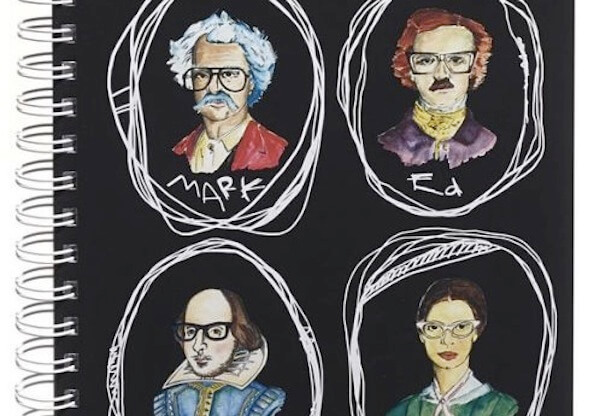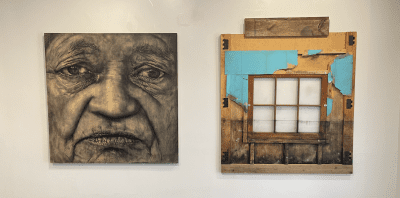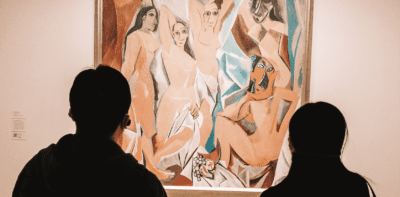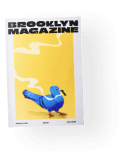Don’t Call It Selling Out: Pratt Students Sell In

Hip Famous Authors notebook (image: Barnes & Noble)
Of the many press releases that find their way to us, one caught our eye last week: an announcement of the sixth year of a collaboration between Brooklyn’s Pratt Institute and megabookseller Barnes and Noble, in which Pratt students design products for sale online and in select stores. What sounded at first like the NCAA for the art school set turned out to be almost the opposite—actual paid work experience! For… artists? Sure. I spoke with Ludovic Leroy, Pratt’s executive director for strategic partnerships and institutional support, to learn more.
As it turns out, Barnes and Noble is just one of a few companies taking advantage of the tremendous pool of talent on Pratt’s Clinton Hill campus. That cool floating bookshelf your friend has and you hate him for it? Pratt. This adorable thing? Pratt. In a few weeks, Visa will sponsor a design charette—a collective brainstorm on a designated design problem—at Pratt, on innovative strategies for the future of payment transactions.
For collaborations like the ones with Barnes and Noble and Umbra, Leroy told me, students are hand-picked by a faculty lead and invited to participate in a design competition. Selected students are given guidance by representatives from corporate representatives throughout the design process.
“One of the critical parts for us, on the Pratt side, is that it’s very important for the corporate representatives to be part of the process with the students… interact with them and give them a sense of what designs that they’re producing are viable and which ones are not necessarily, and giving them that sort of feedback. And that’s what’s critical—that exchange—for the students.”
Invited students are typically undergraduate seniors or graduate students, and in many respects the program seems sort of like an ideal internship. Did I mention they get paid? Students whose products are sold by Barnes and Noble are paid royalties according to the number sold, which they then split with the school. But, in a rare twist, they aren’t completely signing their work away: “All the students, whether or not the products are produced, get to keep the rights to show the work in their portfolios, and illustrate that they participated in the project. For those that are produced, the rights are shared… and so the royalties that come back are shared with Pratt and the student.”
In the Age of the Unpaid Intern (also known as the “economic recovery”), mutual benefit and due credit are nothing to yawn at, particularly in the arts. For its part, Pratt plays no small part in brokering real-world experience for talented student-artists. (Plus it’s nice to see that, at least in some things, the art kids may have it better than the jocks.) While it’s rare that an internship or even an apprenticeship operates with as much concern for intellectual property, the bottom line is that Pratt students are involved at every level of the corporate collaboration process, and have something to show for it—which may be even rarer.
The realist counterargument, of course, is that Pratt’s corporate collaborators have something to gain, too, and are not [necessarily] acting solely out of the goodness of their hearts, or an interest in Supporting The Arts. Few companies have as much to gain from its interns, paid or unpaid, and I can’t imagine many would consider the arrangement a “collaboration,” but mutual enrichment is something to aim for. Oh, and money.
CORRECTION: An earlier version of this article mistakenly listed art therapy as the topic of the upcoming Visa design charette.
Follow John Sherman on Twitter @_john_sherman.
You might also like 



















